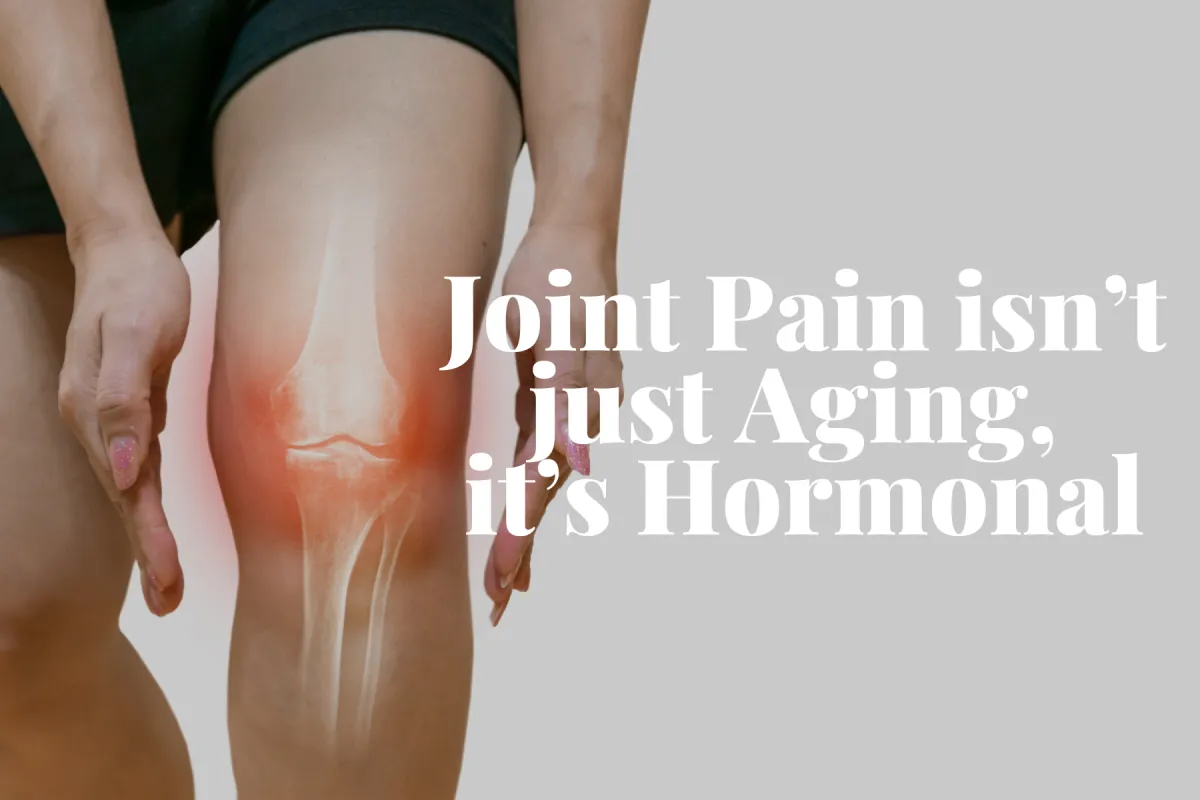
Why Your Joints Ache More After 40 (and What to Do About It)
Let’s talk about the aches and pains that sneak up on you after 40. I'm talking about the stiff knees in the morning, the creaky shoulders after a workout, or the hips that suddenly feel ancient after a walk.
No, it’s not “just aging.” And no, you don’t have to live like that.
Hormones, inflammation, and recovery gaps all start compounding after 40, especially if you’re not lifting, sleeping, or eating in a way that supports your body now.
If your joints feel older than you are, here’s what’s really going on (and what to do about it.)
1. Estrogen and Joint Lubrication: The Link Most Women Miss
Estrogen isn’t just about periods and mood swings. It plays a major role in joint health.
Once estrogen starts declining (hello perimenopause), your body naturally produces less synovial fluid. This is the lubricant that cushions your joints and keeps them moving smoothly. Less estrogen = more stiffness, more cracking, and more pain.
Common signs of estrogen-related joint decline:
Stiff knees in the morning
Pain when going downstairs
Shoulders that snap, crackle, and pop
If you’re noticing this in your 40s or 50s, it’s not in your head. It’s hormonal. In fact, Dr. Mary Claire Haver, OB-GYN and menopause specialist, shares that up to 80% of women report musculoskeletal discomfort in midlife. For many, it’s one of the most disruptive symptoms of the menopause transition.
2. Inflammation Is Fueling Your Pain (Yes, Even If You Eat “Healthy”)
Inflammation and midlife are besties, but they’re toxic ones.
As we age, our bodies become more sensitive to inflammatory triggers, including:
Sugar and ultra-processed foods
Excess alcohol
Poor sleep and chronic stress
Overtraining (or not training at all)
That bloated, puffy, joint-on-fire feeling? It’s not always “just sore muscles.” It’s your body screaming for better inputs.
3. You’re Not Recovering — You’re Just Resting
Recovery isn’t about skipping the gym for a day. It’s about intentional recovery strategies that reduce inflammation, support hormone function, and repair tissue.
Recovery tips for joint support:
Magnesium + electrolytes: replenish minerals lost through stress and sweat
Anti-inflammatory meals: think berries, greens, wild salmon, olive oil
Sleep like it’s your job: poor sleep = poor repair
Mobility > Intensity on rest days: walking, stretching, epsom salt baths
4. The Fix: Strength + Fat + Fish Oil
Here’s what I prescribe to almost every woman over 40 dealing with joint pain:
✅ Strength training (with proper form):
Building muscle supports your joints, improves stability, and reduces injury risk. But the key is correct form and progressive overload, not random HIIT or “booty band burnout” workouts.
✅ Healthy fats (daily):
Stop fearing fat. Your joints (and hormones) need it. Focus on avocado, olive oil, grass-fed meats, and fatty fish.
✅ Omega-3s (fish oil):
They reduce inflammation, support cartilage, and help lubricate joints. Aim for 2–3g EPA/DHA daily or get tested for optimal dosing.
✅ Consider collagen + vitamin C:
Together, they support connective tissue and tendon repair, especially helpful post-injury or if you lift heavy.
Final Thought: Joint Pain Isn’t the Price of Aging. It’s the Cost of Neglect
Your body isn’t breaking. It’s just adapting to a new phase of life. One where hormones shift, recovery matters more, and you can’t just wing it anymore.
The good news? You’re not powerless.
Support your joints with movement, muscle, nutrients, and recovery. You won’t just feel younger… you’ll move younger!
Check out this full supplement list I put together on the brands I've found to be the cleanest and most effective for women like us.
Want help building a joint-friendly, hormone-smart training plan?
Apply now for my personalized coaching program — where strong, sexy, and pain-free is the new normal.
